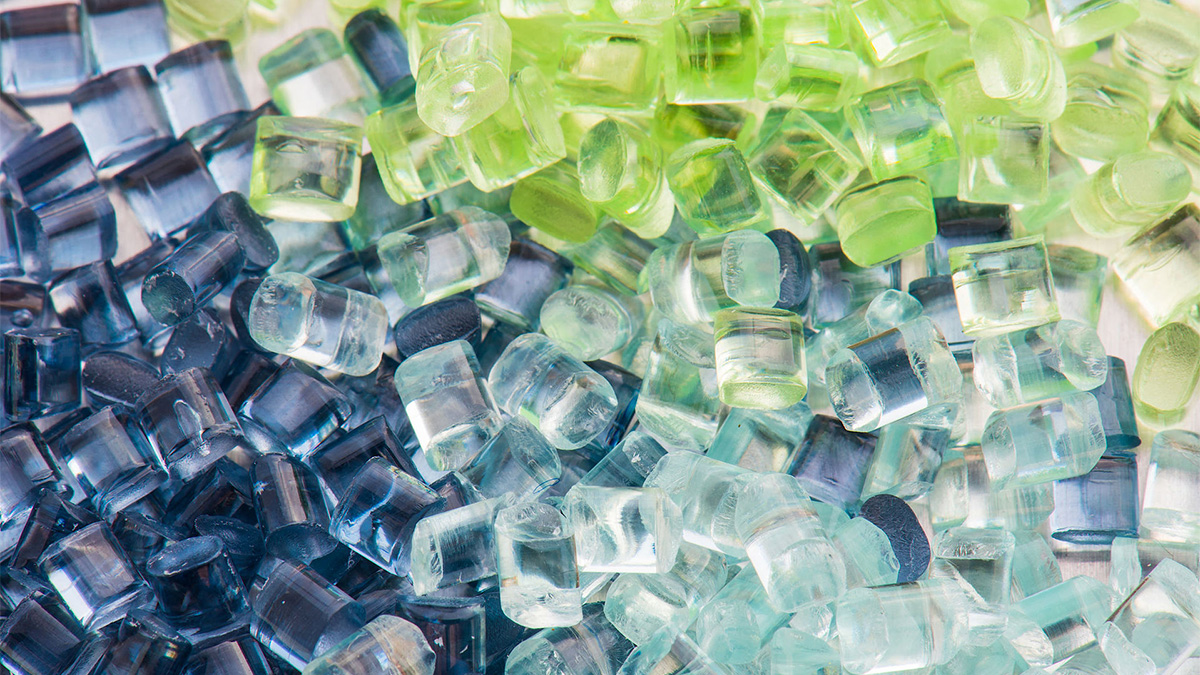Plastic rubber has long been one of the important raw materials used for medical equipment and pharmaceutical packaging. With the vigorous development of the industry, various high-performance plastics and technologies for medical devices have emerged. In addition to traditional medical plastics, such as PP, PVC, PE, and silicone rubber, which are commonly used in the medical device industry, some high-performance materials have been developed that are important to the medical device industry.
Market Development of Medical Plastics:
Products made of plastic materials have already penetrated our lives. Humans are accustomed to plastic things, and because of the advancement of technology, plastic materials are more optimized to meet the requirements of temperature, environment, structure, and so on.
In our daily lives, almost 98% of the products we use are made of plastic materials. However, for medical devices the material property requirements are much higher than for daily use items. Instruments and devices used for medical procedures need to be sturdy and reliable in order to ensure safety during use.
Plastic materials have helped to facilitate the development of medical devices and have allowed for many breakthroughs in manufacturing. Compared with other materials, plastic materials are light in weight, low cost, easy to process, elastic and non-ferrous (providing safety for MRI irradiation), and have excellent biocompatibility. These advantages make it easier to develop next-generation implants, disposable single-use devices, packaging technologies, and the like. Global demand for medical polymers has reached nearly 5 million metric tons and is expected to continue to grow and exceed 7 million metric tons.
What are the Development Advantages of Medical Plastics?
- The costs are low, they can be reused without sterilization, and they are suitable for use in disposable medical devices.
- Their processing is simple, and because of their plasticity, they can be processed into a variety of useful structures that are difficult to manufacture from metal, glass, or other materials.
- They are tough and elastic so are not as easily broken as glass.
- They have good chemical inertness and biological safety.
Characteristics of Research and Development and Selection of Plastic Materials:
The demand for plastic materials is slowly increasing in medical products. In the future, when choosing plastic materials to design medical materials, there are several important things that need to be taken into consideration when designing and selecting medical materials:
- The plastic material should be resistant to chemical cleaning agents for enhanced service life in the hospital:
Even though hospitals do their best to reduce the risk of nosocomial (health-care associated) infection, nosocomial infection is still a high risk and needs to be treated with caution throughout the hospital. To combat nosocomial infections, in addition to using copper metal surface materials, it is common for hospitals to use disinfectants to clean the surfaces of instruments and equipment. But over time, if the plastic is not strong enough, these devices may begin to corrode, crack, discolor, and become structurally brittle, posing a danger.
- Plastic materials can replace metal materials and provide similar or even better performance:
In the design of medical equipment, new medical plastic materials have replaced the metals used in products of the past. Many engineering plastics perform like metals and have the same tensile strength, but are lighter, cheaper, more flexible, and easier to manufacture. Lightweight plastic products, combined with the ergonomic designs of the products, make long surgical procedures easier. Also, plastic injection molding is much cheaper than metal manufacturing.
- Cost control, from raw material to process:
Cost reduction is a concern of manufacturers in all walks of life. Medical device manufacturers around the world, including upstream material suppliers and contract manufacturers, are required to join the ranks of cost reduction. For this reason, some manufacturers use new medical plastic materials and processing technologies to replace the current methods to reduce costs.
- Safe materials to address environmental issues and interferences with human health:
Many groups in society continue to promote environmental protection and human health, prompting medical equipment manufacturers to start paying closer attention to production issues.
One medical manufacturing challenge is designing products without bisphenol A (BPA). Bisphenol A is one of the components of polycarbonate (PC), a commonly used medical-grade thermoplastic polymer. When polycarbonate degrades, bisphenol A will be precipitated. Its chemical structure is similar to estrogen, and can act as a biological hormone or endocrine disruptor. It may also cause cancer and problems in human development and behavior. Exposure to BPA has therefore been a general concern, as materials with BPA have been used in beverage containers, food packaging, and intravenous injection devices. To ensure the safety of infants and young children, Taiwan has revised the hygiene standards for food utensils and containers and has completely banned the manufacture and sale of baby bottles containing bisphenol A. A safety review report by the FDA and Health Canada concluded that there is no minimum safe dose of BPA.
The government and relevant safety inspection units are also increasingly concerned about issues of environmental protection, environment, and human safety, and are also promoting relevant policies. Various medical device manufacturers are also developing manufacturing processes that will gradually improve medical plastic applications.
- Bioabsorbable materials, used in various implant designs:
Bioabsorbable polymers have been around for a long time, but they have only been used in medical devices in recent years. These materials will degrade over time and be safely absorbed and excreted by the body. Its new applications are currently in the field of drug delivery (eg: drug-coated stents), bone augmentation and fixation (eg: bone nails), and soft tissue regeneration and replacement (stents).
What are the Benefits of Bioabsorbable Materials?
For bone plates and pins used in orthopedics, if absorbable materials are used to replace the traditional titanium alloys, as the bones heal the materials will slowly dissolve, eliminating the need for subsequent surgery to remove the implants, thus reducing the cost of surgery and risk of infection.
Most bioabsorbable materials are produced using two common polyester materials; polylactic acid (PLA) and polyglycolic acid (PGA). Another new material is polyglycerol sebacate (PGS). PGS can be customized for different applications, such as repair scaffolds for bones, fibers for bio textiles, and coatings on implant surfaces. In addition, PGS does not trigger an immune or inflammatory response in patients.
What are Commonly Used Medical Plastics?
-
Polyvinyl chloride (PVC):
PVC is one of the most widely produced plastics in the world. PVC resin is a white or light-yellow powder. Pure PVC is an asymmetric polymer that is hard, and brittle. Different additives can be added to PVC plastic to give it different physical and mechanical properties. Adding varying amounts of plasticizer to PVC resin can make a variety of hard, soft, and transparent products. Hard PVC contains a small amount of plasticizer, has good tensile, flexural, compressive, and impact resistance properties, and can be used alone as a structural material. Soft PVC contains more plasticizers so is more flexible and resistance to cold, and is less brittle, but it has lower hardness and tensile strength.
About 25% of medical plastic products are PVC. This is mainly due to the low cost of the resin, its wide application range, and its ease of processing. PVC products for medical applications include hemodialysis tubing, breathing masks, oxygen inhalation tubes, etc.
-
Polyethylene (PE):
Polyethylene plastic is the most common of all plastics used today. The non-toxic, glossy, waxy particles, have a milky white color and are tasteless and odorless. The low price and good performance of PE has led to it being widely used in industry, agriculture, packaging, and for daily use items such as plastic bags, plastic films, and bottles.
PE can be formulated with different densities giving it a range of distinctive physical properties. Low-density polyethylene (LDPE) has a highly branched molecular structure giving it a relatively lower molecular weight. It is less dense and has good flexibility, impact resistance, and transparency. LDPE is often used in blown film. High-density polyethylene (HDPE) has fewer branches on its polymer chain structure so has a higher relative molecular mass. It is more dense, harder and stronger than LDPE, and has poor opacity and a higher melting point. It is often used for injection molded parts. Ultra-high-density polyethylene (UHDPE) has high impact resistance, low friction, good stress crack resistance, and good energy absorption properties, making it an ideal material for artificial hip, knee, and shoulder connectors.
-
Polypropylene (PP):
Polypropylene is colorless, odorless, and non-toxic. Looks like polyethylene, but is more transparent and lighter than polyethylene. PP is a thermoplastic with excellent properties, with the advantages of small specific gravity, non-toxicity, easy processing, impact resistance, and flex resistance. It has a wide range of applications in daily life, including woven bags, films, turnover boxes, wire shielding materials, toys, car bumpers, fibers, washing machines, etc. Medical PP has high transparency, good barrier properties, and radiation resistance, making it widely used in medical equipment and packaging industries. PP as the main plastic used as a substitute for the widely used PVC.
-
Polystyrene (PS) and K resin:
PS is the third-largest plastic variety after polyvinyl chloride and polyethylene. It is used in electrical parts, optical instruments, and cultural and educational supplies. The texture is hard and brittle but it has a high coefficient of thermal expansion, which limits its application in engineering. In recent decades, modified polystyrene and styrene-based copolymers have been developed to overcome the shortcomings of polystyrene to a certain extent, and K resin is one of them.
K resins are copolymers made by copolymerization of styrene and butadiene. They are transparent, odorless, and non-toxic, amorphous polymers. As the amount of butadiene contained in the K material varies, its hardness also varies. Because the K material has good fluidity and a wide processing temperature range, its processing performance is good. The main uses in daily life include for cups, lids, bottles, cosmetic packaging, hangers, toys, PVC substitute products, food packaging, and medical packaging supplies.
-
Acrylonitrile Butadiene Styrene copolymers (ABS):
ABS has a high degree of rigidity, hardness, impact and chemical resistance, radiation resistance, and sterilization resistance. In medical applications, ABS is mainly used for surgical tools, roller clips, plastic needles, toolboxes, diagnostic devices, hearing aid shells, and the shells of large medical equipment.
-
Polycarbonate (PC):
Typical properties of PC are toughness, strength, rigidity, and heat-resistant which allows for steam sterilization, making PC the preferred choice for hemodialysis filters, surgical tool handles, and oxygen tanks. Medical applications of PC also include needle-free injection systems, perfusion instruments, blood centrifuge bowls, and pistons. Taking advantage of its high transparency, vision correction glasses are made of PC.
-
Polytetrafluoroethylene (PTFE):
PTFE is a white polymer with a smooth waxy appearance. Its non-stick property makes it an important plastic for medical applications. Its friction coefficient is the lowest among plastics, and it has good biocompatibility. It is commonly used as a graft material in surgical procedures and is also frequently used for catheters, as it interferes with the ability of bacteria and other infectious agents to adhere to catheters. It can be made into artificial blood vessels and other devices that are directly implanted into the human body.



.jpg)








.jpg)
.jpg)
.jpg)